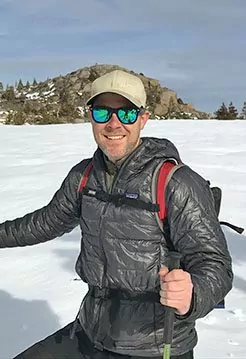Backpacking Foot Care: Six Tips For Happier Feet On The Trail

Have you heard of canyon toe? It’s kind of macabre slang among Grand Canyon guides and wilderness medicine folks for a grossly damaged big toe as a result of hiking in new or ill-fitting boots. The steep, rocky terrain of the Canyon’s trails is no place to test boots for the first time. The biggest little piglet can take a real beating inside a boot’s dark, rigid toe box. A couple of miles is all it takes to morph a big toe into an unrecognizable pulp. If you’re not scared into proper backpacking foot care by that grotesque description, well, we don’t know how to help you.
We’re not trying to sound alarmist. Canyon toe rarely does anything permanent. However, it will ruin a trip. Luckily, canyon toe is easily avoided and doesn’t happen very often. We just want to emphasize the importance of taking care of your feet while backpacking (before, during, and after a trip), whether you’re hiking in the Grand Canyon or the Great Smoky Mountains.
Do your feet hurt while hiking? Do you suffer from swollen feet while backpacking? To help you avoid these undesirable problems, we’ve compiled a list of six hiking foot care tips to consider for maintaining happy feet when backpacking.
1. Break In your boots
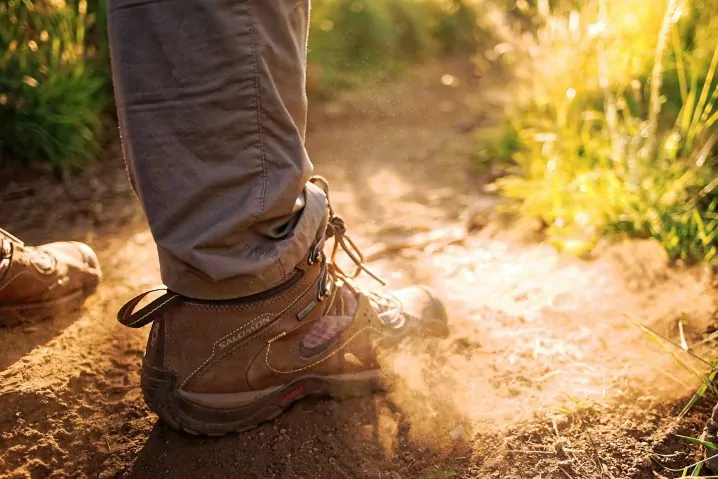 You don’t want to hit the trail on your multiday backpacking trip with brand new boots tied to your feet. But how do you break in new hiking boots?
You don’t want to hit the trail on your multiday backpacking trip with brand new boots tied to your feet. But how do you break in new hiking boots?
If you want to prepare your feet for a long hiking trip with Wildland, get your new boots as soon as possible. Wear them around the house, to the store, and on training hikes. Carry weight in a backpack so you’ll know how your feet swell and how this impacts comfort.
If you want to be extremely prepared, you can test different lacing styles and sock combinations. Some people opt for sock liners, while other use just one layer of high-quality wool socks. See what works for you before you spend several days in the backcountry.
2. Attack Hot Spots before They Blister
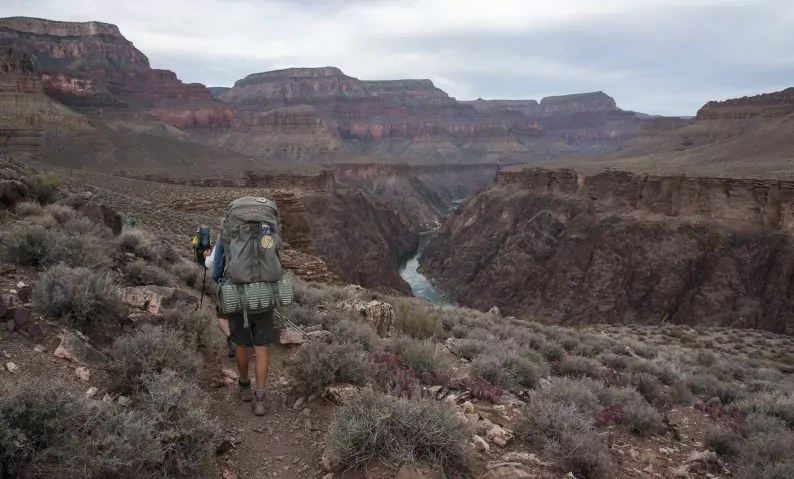 How do you take care of your feet when hiking? Well, our number one tip is to avoid blisters. Blisters are friction burns that can turn your bucket list trip into a miserable slog. Thankfully, blisters give us a warning signal before they fill with pus and eventually erupt (sorry for the visual). This pre-blister stage is called a hot-spot. Tell your guide as soon as you notice some uncomfortable rubbing.
How do you take care of your feet when hiking? Well, our number one tip is to avoid blisters. Blisters are friction burns that can turn your bucket list trip into a miserable slog. Thankfully, blisters give us a warning signal before they fill with pus and eventually erupt (sorry for the visual). This pre-blister stage is called a hot-spot. Tell your guide as soon as you notice some uncomfortable rubbing.
While medical standards exist for treating a fully-developed blister, preventative treatments vary for hot spots. Some guides use duct tape and some use a moleskin “doughnut” type bandage. On Wildland trips, we’ll do our best to treat it as soon as possible and if you have your own method, we’re open to that as well.
3. Avoid Damp feet
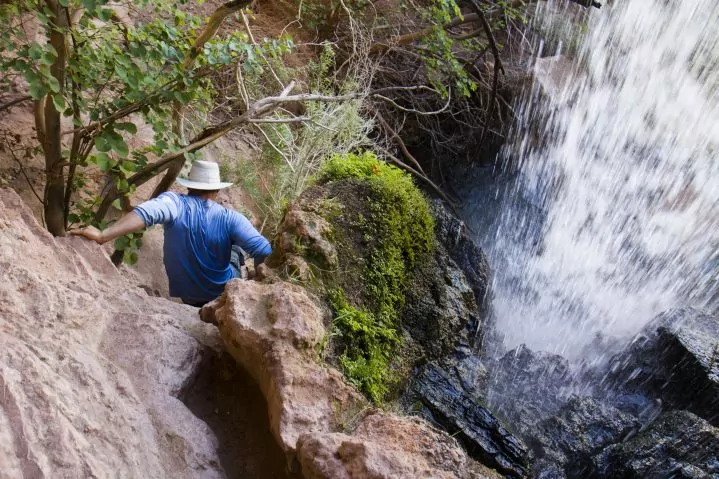 Just because you don’t want damp feet doesn’t mean you can’t go frolic in a stream or keep your boots on for a river crossing — we’re not trying to take away all your fun. Soaked feet won’t augment blister risk; persistently damp feet will. While hiking, you should monitor the moisture levels within your boots. During breaks or lunch, take a minute to expose your feet and use a bandana or pack towel to wipe them clean.
Just because you don’t want damp feet doesn’t mean you can’t go frolic in a stream or keep your boots on for a river crossing — we’re not trying to take away all your fun. Soaked feet won’t augment blister risk; persistently damp feet will. While hiking, you should monitor the moisture levels within your boots. During breaks or lunch, take a minute to expose your feet and use a bandana or pack towel to wipe them clean.
If you’re prone to sweaty feet while hiking, keep a dry pair of socks handy so you can swap them out halfway through the day. On longer backpacking trips, you’ll want to have several pairs of extra socks to make sure you can always have a dry, clean pair. Sometimes, though, your socks just get wet while hiking. In this case, take them off your feet (or out of your pack) and hang them up to dry at camp.
4. Camp Shoes
It’s good to let your feet air out after a long day of hiking. So, having another pair of shoes to wear at camp is a terrific way to respect your feet. Rugged, open-toe sandals — such as Chacos or Keens — are a good option, but can be heavy. Flip-flops are lightweight, but if you want to explore beyond camp, they are not ideal.
Usually, a lightweight, breathable sneaker makes a soothing, sturdy option for those relaxing, post-hike hours at camp (a real treat on a backcountry camping trip). Some people even swear by Crocs as the ultimate camp shoe because they are lightweight, waterproof, and breathable but offer ample coverage.
Whichever style you decide, give your feet a break and pack those camp shoes with you!
5. sacred socks
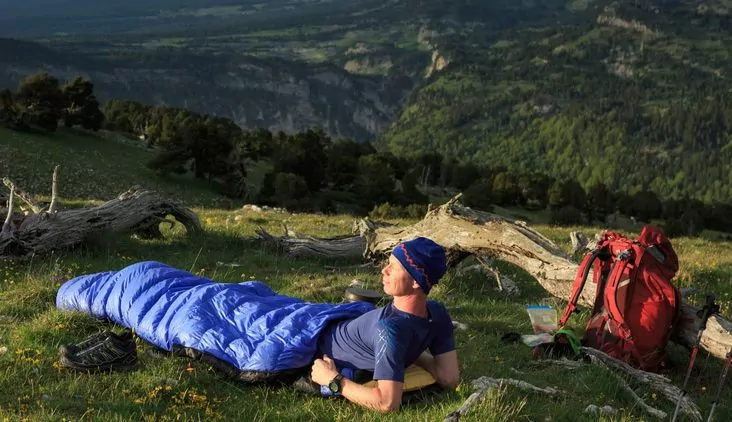
Ready to go next-level backpacker? We’re going to let you in on our favorite, secret tip:
Stash a pair of thick, comfortable socks in your sleeping bag to put on at night. Keep them in your bag, away from your other clothes, even when you pack up in the morning. Don’t leave the tent while wearing them. This is why they’re sacred.
There’s even an emotional advantage to your sacred socks. As you’re hiking, it’s reassuring to know you have something dry and clean at the ready for your dirty, aching feet. Keep ’em happy.
6. Use Common Sense
Finally, be wary of what information you find on the web about preventing blisters while backpacking. You’ll find tips about talcum powder and liner socks and roll-on creams. You’ll see people who swear by pre-taping and all kinds of other “best tips ever!” Even we don’t have all the answers, because everyone’s feet react differently to shoe and sock styles.
The key is to be aware, trust your body, treat hot spots early, and use common sense. If your foot hurts, take a minute to fix it before continuing down the trail. Even if it’s a hassle at the time, we promise you’ll thank yourself later.
There is one thing we do know for sure, though: you can never go wrong with sacred socks. Seriously. Never.




